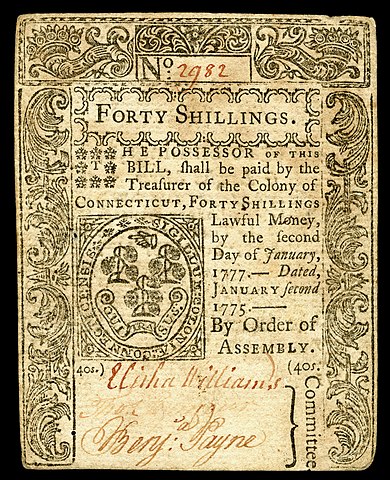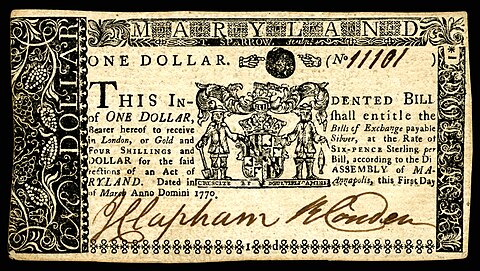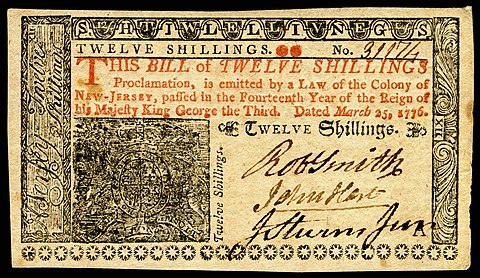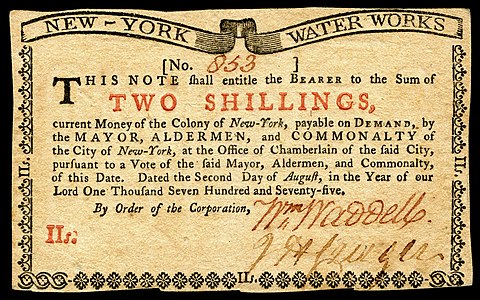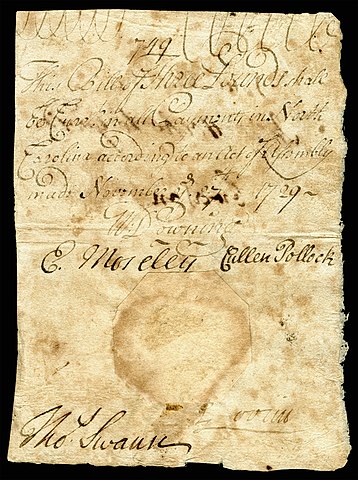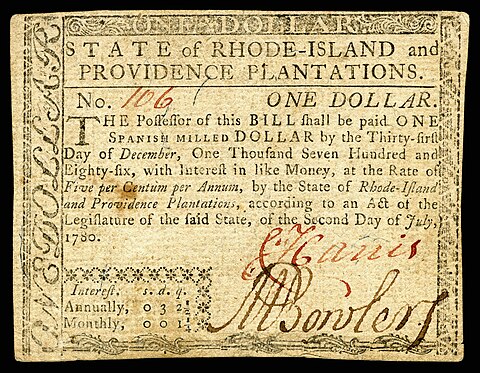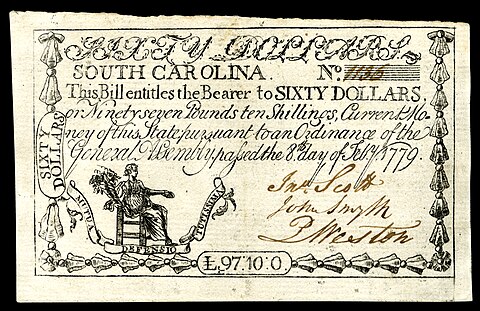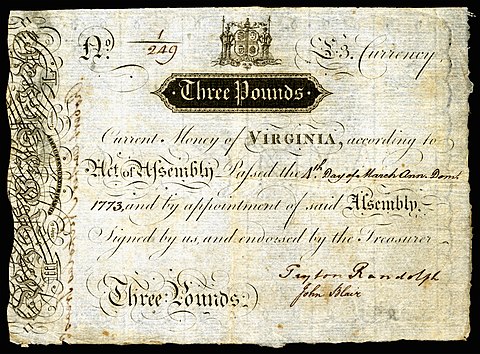Commons:Valued image candidates/Thirteen Colony type set of Colonial Banknotes
Thirteen Colony type set of Colonial Banknotes
| Images |
|
|---|---|
| Description |
A set of Colonial currency with issue dates ranging from 1729 to 1780. Each note bears at least two autographed signatures of community members appointed by legislation to supervise the printing and personally sign the currency. Notes for this set were selected, when possible, for the signers' historical notability and include (but are not limited to): Speakers of a state or colonial legislative assembly (4); delegates to the Continental Congress (4, including its first President); Governors (or in one case State President) (3); signers of the Declaration of Independence (2); delegates to the Constitutional Convention (2); delegates to the Stamp Act Congress (2); Colonial treasurers (2); an inaugural appointee to the Supreme Court of the United States (1). |
| Nominated by | Godot13 (talk) on 2014-05-04 05:45 (UTC) |
| Scope | Nominated as the most valued set of images on Wikimedia Commons within the scope: Colonial currency, A set of banknotes from the original 13 colonies. |
| Used in |
Early American currency (all); additionally, one each in John McKinly, Thomas Collins, William Few, John Hart, John Stevens, Jr., John H. Cruger, Edward Moseley, Metcalf Bowler, Peyton Randolph, John Blair, Jr., and Robert Carter Nicholas, Sr.; recently added to New Jersey pound, North Carolina pound, and Virginia pound. |
| Review (criteria) |
::Thanks for the question. The set itself is the fact that one note from each of the original 13 Colonies is represented. When trying to select notes within a given colony, preference was given to those that were signed by more notable/historical people. Not every colony that issued notes actually had a delegate or notable document signer who was appointed to also sign currency. Either that, or an example was not available in the Smithsonian's collection. In these cases either earlier/rarer notes (like Massachusetts) or high grade notes (like South Carolina) were used. Also, I hope you visited the article itself, as additional information is provided for several people who do not have their own wikipedia article. The central purpose of this set is to provide an example from each of the 13 colonies, trying to have notable signers in increase and broaden the scope of the encyclopedic value is the bonus. I hope that answers your question.--Godot13 (talk) 20:58, 4 May 2014 (UTC) :::The image you point out above is the reverse of a note which I have not included for space reasons. All of the reverse side are linked to the front.--Godot13 (talk) 21:02, 4 May 2014 (UTC)
|
